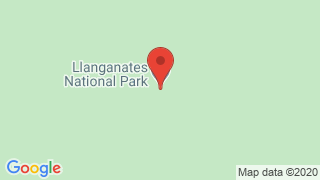Llanganates National Park






LLanganates Nature Reserve
Llanganates. Its meaning Beautiful Hill (Cerro Hermoso)
The natural reserve of the Llanganates has been characterized by its mystery. In the past, it was assured that the Incas’ lost treasure was there and this could be due to the fact that it is one of the few intact paradises in the world, where true wealth is reflected in life. Extended by 219,707 hectares between the Ecuadorian provinces of Tungurahua, Cotopaxi, Pastaza and Napo, its temperature ranges between 3 and 24 ° C and in its interior Napo and Pastaza rivers systems originate. It has an important lake system where 200 lagoons have been recognized and it is considered one of the most significant wetlands worldwide.
Many of the tourists take the opportunity to know in holydays.
It includes several altitude floors with a moorland ecosystem, Andean forest, and humid montane forest. Its highlights include some tributary lagoons that form Pastaza River and Napo River.
To safeguard it, human intervention within the territory is prohibited. It is divided into two regions: the western one in the Andean Páramo, elevated and cold, where the landscapes are homogeneous with the presence of Andean vegetation, peaks and valleys. The flora is one of the most important in the Andean region and the fauna is reflected in llamas, tapirs, spectacled bears, cervicabras, deer, wolves, monkeys, Andean rodents, among others. It is estimated that there are about 300 species of birds, mammals, amphibians and reptiles.
Through the path designed for tourists, you access the eastern area, located on the sides of the Andean mountain range. The cold places of the moor are left to enter the tropical zone. The temperature drops and the vegetation becomes thicker. The flora and fauna remain virgin, since much of their areas are inaccessible to cars. Biodiversity, rich in plants and animals, remains unknown and rectifies the fame of the reserve, as a paradise full of mystery and purity.
How to get from Quito to Llanganates National Park
First option
You have to choose the road heading from Quito to Ambato, which has an approximate distance of 132 km, reaching Ambato, take the detour to the road via Píllaro and continue with the sector of two Acequias. It passes through the town of San José de Poaló, and arriving at Sunfopamba where the shelter and the respective guard is located.
Second option
The Quito road to Salcedo is chosen about 104 km to San Miguel parish and then you reach Panzarumi refuge. It is estimated a travel time from Salcedo 45 minutes with a distance of 24 km. You can travel by car or choose public transport.
How to get from Tena to Llanganates National Park
Take the Pano road to Tálag, 4 km away from Talag Park control station.
How to get from Mera to Llanganates National Park
You take Mera road to Río Anzu and at km 12 there is the park's security post. In this place you can go to the caves of the Anzu River located in the buffer zone of the park.
LLanganates mountain range
The Cordillera is part of the LLanganates national park, it is of great ecological and historical importance, even on this mountain range the legend of the Rumiñahui treasure has been woven. In this place, evidence of expedition tracks was found looking for this treasure
The Area topography is very irregular, it is conformed by forest and wet moors, lagoons and mist forests can be located and in this area it is characterized by having fraylejones, it is composed of a biodiversity variety.
It is a place of great tourist demand, due to its topographic characteristics, its climate and splendid landscapes.
LLanganates National Park Flora and Fauna
Ecological environmental studies in the area have determined that the presence of 800 species of plants are recognized, plants that have conductive vessels, endemic plants that were not registered. The Park has areas with secondary vegetation that colonizes disturbed areas and other areas with natural vegetation. In the Machay forest there is currently an endemic tree in Tungura area and Llanganates Zapoteca (an area of influence of the Park) there is perhaps the only natural population of an endemic tree for the area of Tungurahua and the Llanganates Zapoteca aculeata (Fabaceae ); (Vargas et al. 2000). The Orchidaceae family contains two new species of the genera Epidendrum and Erythrodes.
The fauna of the Llanganates National Park has 231 species of birds, 46 species of mammals and 23 species of amphibians and reptiles.
Recommendations of the LLanganates National Park
If the intention is to venture on foot beyond the common places of visit, where Los Llanganates’ true attraction lies, the company of a native guide is indispensable that can orient under the severe and changing climatic conditions that prevail in the mountain range. In addition, it is essential to use:
- Warm and waterproof clothing to tour the area
- It is important to stay hydrated and bring something to eat.
- You can take in a coffee or hot chocolate thermos
- Be in comfortable clothes and shoes that protect you from rain or sun
Information Point Baños de Agua Santa
Av. Luis A. Martínez and Thomas Halflants and Eloy Alfaro.
Holy water baths. Tungurahua Province
Phone: (03) 274-1662
The most visited sites in Ecuador
- Quilotoa Lagoon
- Half of the world
- Malecon 2000
- Quito's Historic center
- The Quito Round
- Samanes Park of Guayaquil
- La Carolina Quito Park
- Cableway
- Ingapirca
- Las Peñas neighborhood
- Carondelet Palace
- Metropolitan park
- Treehouse
- Plaza Grande Quito
- Itchimbia
- Devil's Nose
- Crater of Pululahua
- Quito Botanical Garden

Publicado en:
Publicado por:



